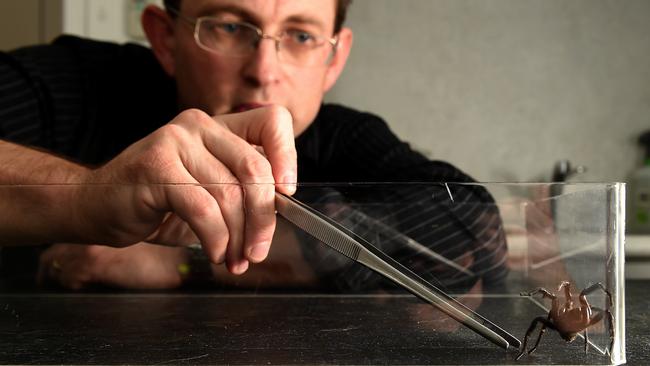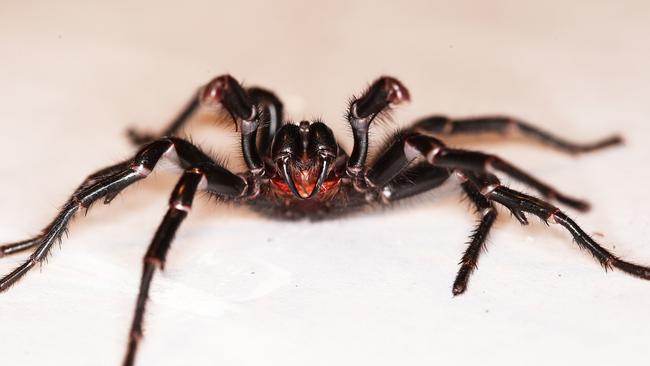Plea for northern beaches residents to catch live funnel-webs for antivenene program
NORTHERN beaches residents are being asked to “do your duty” and catch live funnel-web spiders to boost vital antivenene supplies. But are you brave enough?
Nth Beaches
Don't miss out on the headlines from Nth Beaches. Followed categories will be added to My News.
EXPERTS are urging northern beaches residents to hunt and catch live funnel-web spiders so they can be milked to make the lifesaving antivenene.
The Australian Reptile Park, the only place in the country which milks the spiders for venom, said the program saves 300 lives a year.
But, it said there had been a dramatic drop in donations from the northern beaches and the north shore, areas renowned as a hot spot for funnel-webs.

The park’s spider collector Stacey Denovan said funnel-web donations from this area were essential to maintaining venom supplies.
“However, year-on-year we have seen supplies reduce in peak periods over January, February and March, from on average 40 spiders per week down to 20 per week and of those only five may be the male Sydney funnel-web, which is required for milking,” she said.
Only male funnel-webs can be milked due to their higher venom toxicity than the female.
“Male funnel-webs commonly roam, these are the spiders we’re after,” said Ms Denovan, who added that the male has a spur on its second front leg. “It’s the male we need to produce venom, and they must be alive.”

Liz Vella, head curator at the park said funnel webs only live for 12 months so they’re constantly needing to restock.
“They’re often found in sheltered, shady spots, which are always cool, humid and often damp,” she said.
“They are a feisty species of spider and can be expected to stand their ground and defend themselves. For that reason we encourage adults to educate children that should they locate a spider of any kind that parental assistance be provided in the capture.”

Since the antivenene program began there have been no recorded deaths in Australia, demonstrating its importance.
Drop offs for the northern beaches are at Green Cross Vet at Brookvale and Mona Vale Veterinary Hospital.
Australian Reptile Park has an instruction video at reptilepark.com.au which demonstrates how to capture a funnel-web spider.



